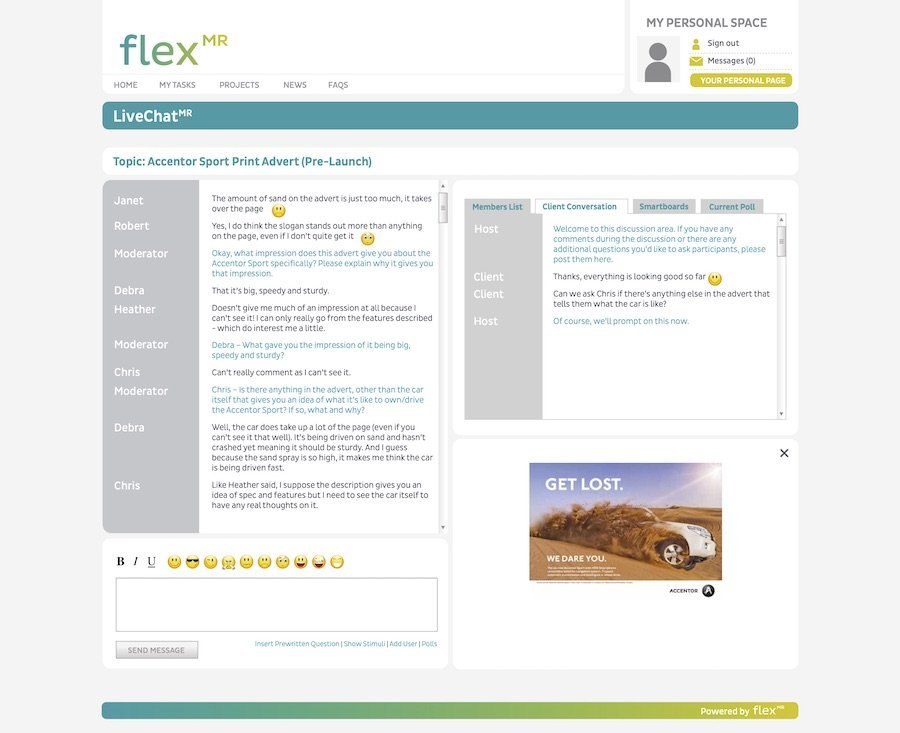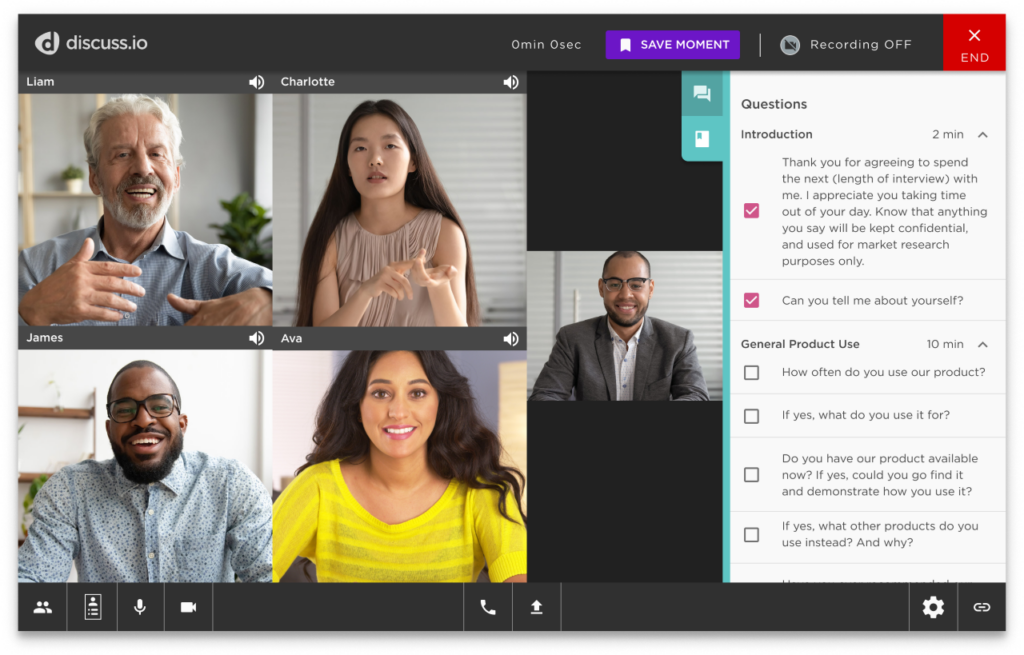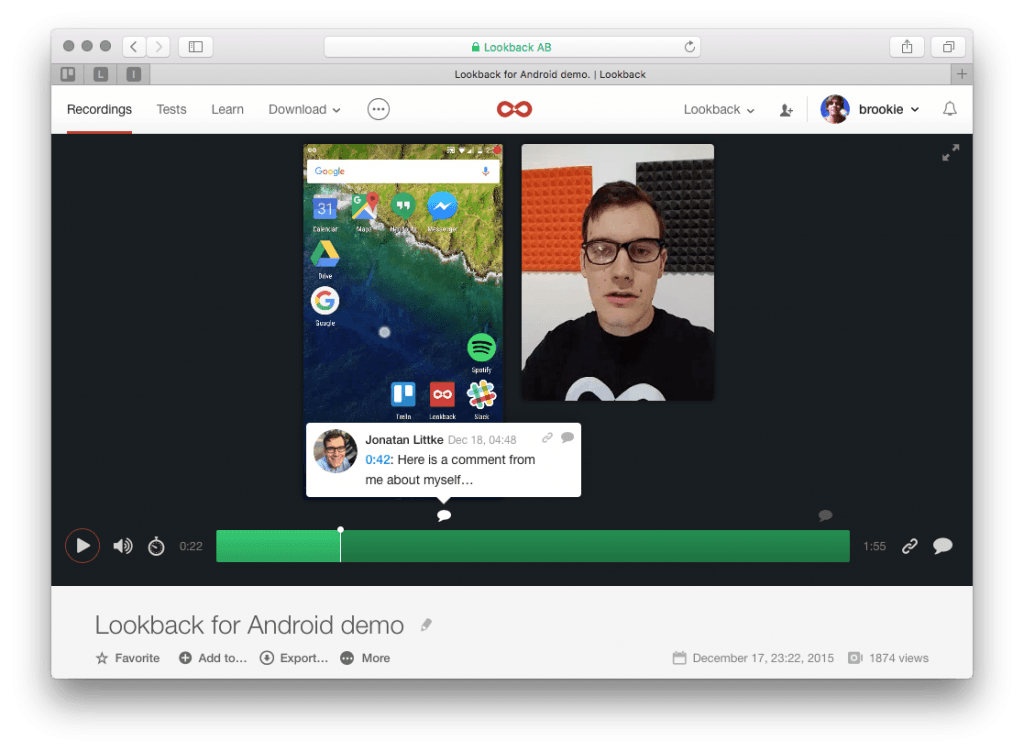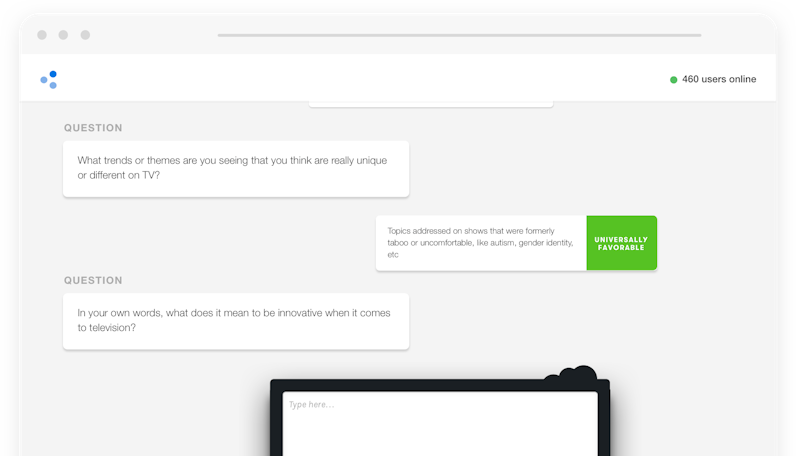What is online qualitative research?
You might as well ask “What is love?“
You will get an answer just as varied and diverse, albeit hopefully more profound.
Online qualitative research encompasses a huge range of different methods which have in common only that they take place in the digital world, and they don’t produce quantitative results.
Except for those that take place offline and produce quantitative results. But we will come to that later on.
This article is an attempt to define the main types of online qualitative research. However, the reality is that there is a lot of crossover between many of these methods.
For example, insight communities can be used to recruit for online focus groups, mobile ethnography or user testing. Smartphone ethnography apps can be used to capture pre-tasks or supporting diaries for live chat groups or bulletin boards.
This means that there isn’t always a clear distinction between different platforms’ online qualitative offerings – but that’s no reason not to try and classify them.
One of the key dimensions that differentiates online qualitative research methods is when the research takes place. Is it synchronous (in real time) or asynchronous? Is it time-bound or ongoing?
Another dimension is where the respondents come from. Are they part of an ongoing community or panel, or are they recruited specifically to take part in this group?
Yet another is the medium of data capture. Is it text, image, video, audio or some combination of the four?
All will become clear – or, at least, less confusing – as we proceed.
1. Live Chat Focus Groups
Online focus groups replicate the structure of a traditional focus group discussion.
A moderator uses a text chat interface to talk with six to eight participants over 60-90 minutes. Discussions typically follow a guide designed to elicit open, in-depth conversations around a specific topic.
Focus group software usually allows moderators to share a range of stimuli with participants – such as images, video or audio content – and there may be features for marking up images with virtual post-it notes or like / dislike emojis; mood boards for uploading pictures or adding text; and whiteboards for free-form drawing.
As with most online qualitative research methods, the medium confers benefits over and above offline methods. Not only is it easier to recruit participants, as they don’t have to leave their own homes, but it is cheaper as incentives are lower and there are no travel costs to consider.
Moderators can post questions to the whole group or to selected individuals – which can be useful when clarifying comments or discussing sensitive topics.
Online focus groups are great for clients too, as they can observe without travel and can input into the discussion in real time by sending questions to the moderator through the platform – or even uploading additional stimuli for participants to consider.
You would use an online focus group for projects where interaction between participants is important, such as ideation and exploratory research, or where you simply need to turn a focus group around quickly and inexpensively.
Examples of platforms that offer live chat online focus groups include recollective, FlexMR InsightHub, CMNTY and VisionsLive.

2. Video-Based Focus Groups and Interviews
Closely related to online focus groups are platforms that use video for live qualitative research discussions – both one-to-one or in groups.
In fact, several software platforms offer both capabilities – for live chat and video-based online focus groups.
Real-time video groups have some benefits in common with live chat groups – familiar format from the offline world, immediate interaction, speed – but in addition, they can help to see participants’ non-verbal responses.
Technically, you can do online video groups on the cheap with apps such as Zoom or Skype – but these don’t offer all the dedicated features of platforms that are specifically designed for market research. These options can work well in one-on-one depth interview situations, which are useful for B2B research, or where you are discussing sensitive topics that don’t do well in a group environment.
Some research-specific video platforms also have access to large numbers of pre-screened participants for both group discussions and one-to-one interviews. These include: discuss.io, Instapanel, Forsta, Suzy and Schlesinger and many others.

3. Discussion Forums or Bulletin Boards
Forums and bulletin boards differ from online focus groups in that they are asynchronous. Boards can run over a period of days or even weeks, with the moderator adding questions to be automatically fielded at varying times, and then moderating by responding to individual answers, or fielding new questions for the group as a whole.
Participants get automated messages via email, SMS or mobile push notification to remind them to check the board for new content.They also typically receive alerts when the moderator or another participant replies to one of their comments.
As with live chat focus groups (above), boards can handle many types of stimulus and have question formats and tools to make the research more interesting and engaging – as well as giving researchers new ways to explore their topics.
For example, participants can mark up images with areas of interest, and add comments, generating heat maps to aid analysis.
But forums and boards also have some advantages over real-time chat groups.
Firstly, because moderation is ongoing and not live, they can handle much higher volumes of participants – 20 or 30 are typical but some board recruit up to 100. This results in large volumes of data, so boards usually come with a variety of analysis tools that enable researchers to tag, sort and categorise responses – a good thing as this amount of qualitative data can be overwhelming to analyse.
Secondly, the asynchronous methodology can result in better engagement as participants can view videos or review other stimulus in their own time, and replay it if needed – so they can give more considered responses.
Finally, the larger numbers of participants can be useful for hybrid forms of ‘quantified’ qualitative research: quick poll questions such as “which is your favourite design?”, or “would you buy this if it cost $x?” help provide directional consensus.
This approach horrifies many qualitative and quantitative research experts – the numbers are too small to rely on, and it’s not the real purpose of qual – but it’s still useful sometimes. Other digital methods are actually making it easier to combine quantitative and qualitative research approaches – more of this later.
Examples of online forums and bulletin boards are Schlesinger Qualboard, itracks and Further.
4. Mobile Ethnography or Diary Platforms
Mobile ethnography or diary apps are a great example of how a valuable (but time consuming and expensive) methodology has been dragged kicking and screaming into the digital age.
The premise of mobile ethnography is that consumers always have their mobiles on them, so can report on their own activities as they are happening. This gives researchers access to in-context research without having to move in with a stranger and watch them eat their Sunday dinner, clean their kitchen or take a shower.
These are all real ethnography projects, by the way – the participants had to shower in their swimsuits.
Projects can play out in a number of ways. For example, you can set participants tasks which they can report on, you can text them at intervals and ask them to report what they are doing, and you can intercept them at specific geographic locations, such as ‘in a supermarket’ to question them ‘in the moment’.
Mobile ethnography platforms are great for getting consumers to keep diaries on specific activities, such as customer journeys, such as ‘How I chose my new mobile phone’ or ‘How many pairs of jeans I try on before I find one I like’.
They are also great for in-store feedback on any element of the marketing mix; gathering insights as products and services are used; or even testing the user experience of smartphone apps or websites.
Examples of mobile ethnography platforms include Indeemo, QualSights and dscout.
5. Insight Communities
Insight communities share some of the attributes of qualitative forum discussions and quantitative survey panels.
Insight communities are groups of consumers who have declared themselves happy to take part in multiple research projects – usually (but not always) for some sort of financial incentive.
Where communities differ from panels is that they tend to be set up around a particular brand, interest group or activity; the idea is to attract consumers who care enough about the topic to want to be involved and give more in-depth qualitative feedback.
In commercial research, brands pay for the community to be set up and maintained, and then feed it a regular diet of research. However, research alone doesn’t keep consumers authentically engaged; they need ongoing content and interesting questions and activities to keep them motivated, all of which make online insight communities great for creative and exploratory research, or testing new product ideas or ads.
It’s also possible to set up a community of people with a particular interest, which may be useful to multiple brands. For example, ‘petrol heads’, dog lovers, video gamers … or any interest you can think of that enthusiasts may want to chat to each other about.
In this way, an insight community can also provide a public service, if it stops them boring other people in the pub about their new car, or what their labradoodle did last week.
You can read much more in these two articles …
Insight community platform providers include incling, Recollective, HatchTank, FlexMR and many more.
Check out this market map, which covers the spectrum of insight community tools (large and small) and online qualitative research tools for forums and live chat groups.
There is a great insight community case study from Spotify here; a guide to moderating communities here; and an ebook about using communities for agile product innovation here.

6. Chatbot Groups
Chatbot platforms use chat interfaces to engage participants in research discussions. These either mimic the look and feel Facebook Messenger or Whatsapp – or even run natively inside these apps.
The ‘bot’ part of the Chatbot is actually a movable feast for many research tools. Realistically, most are just a new interface for a scripted discussion or a survey with branching logic. Some do use machine learning to automate responses – but if you’re expecting to find fully autonomous robot moderators here, you’ll be disappointed.
Maybe next year.
But Chatbot approaches are good for engaging younger audiences, and can enhance different types of online qualitative research – such as adding another dimension of questioning to an online community.
Examples of real-time chat platforms include CRIS and Rival Technologies.
You can read Rival’s guide to effective chat research here.

7. User Testing Research
User testing platforms are designed specifically to capture natural user reactions as they navigate a website, use an app or carry out a series of tasks.
These tools typically record the face, screen and voice of the participant as they use a digital product. They can be moderated in person or remotely, watched remotely by clients, and come with a raft of analysis tools that are designed for UX research – such as tagging, time stamping and collaboration tools.
You can read a more in-depth overview of user testing research here. Examples of platforms include UserTesting, Lookback and Loop11.

8. Live Streaming Video of Offline Qualitative Research
This, you could argue, is the least ‘online’ of all the online methods.
The focus group or interview takes place in a physical venue, and the platform streams video to stakeholders who can’t attend in person.
However, these platforms do much more than just video streaming. Typically live-stream video platforms enable stakeholders to view respondent profiles, add questions for the moderator, and chat with each other whilst the group is live. They also offer analysis tools such as timestamping and tagging.
Great for your travel budget – and great for the climate too.
Forsta is one of the primary providers of live-streamed video software for in-person qualitative research.

9. Quantified ‘Qual at Scale’
It’s been a long time coming, so well done for making it this far.
Digitising qualitative research has changed the nature of what is possible, making large scale qualitative projects financially feasible for the first time.
Several of the methods mentioned above can also have a more quantified element: bulletin boards, communities, chabot groups and user testing can all be extended to dozens or even hundreds of participants.
But artificial intelligence is leading to a whole load of new innovations – including the ability to run discussion groups with up to a thousand participants, and use Natural Language Processing to make sense of all the answers in real time.
You can read more about AI-enabled qual here.
So do we need to invent a new category?
Yes – but we’re not sure what to call it. If you have any bright ideas, please leave the in the comments below. In the meantime, check out what we’re talking about here with tools like inca, remesh, Quester and GroupSolver.

So, what is online qualitative research?
We’ve come a long way together so hopefully we can all agree the following.
Online qualitative research takes place in the digital world. Except when it is offline.
It delivers qualitative results. Except when it is quantitative.
What we can say with conviction is that online qualitative research takes traditional qual research, digitises and enhances it, making it cheaper, faster and easier to do at scale.
